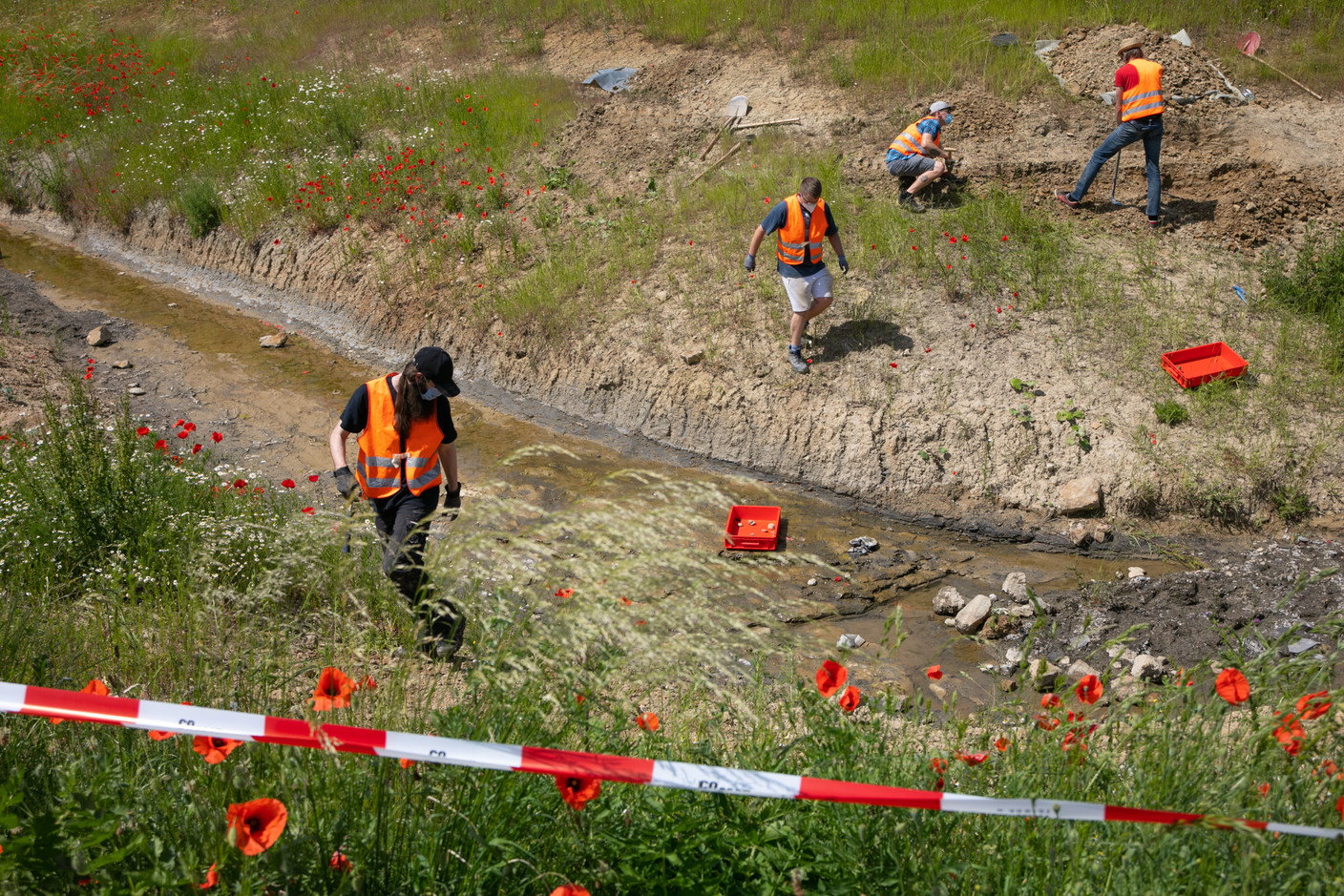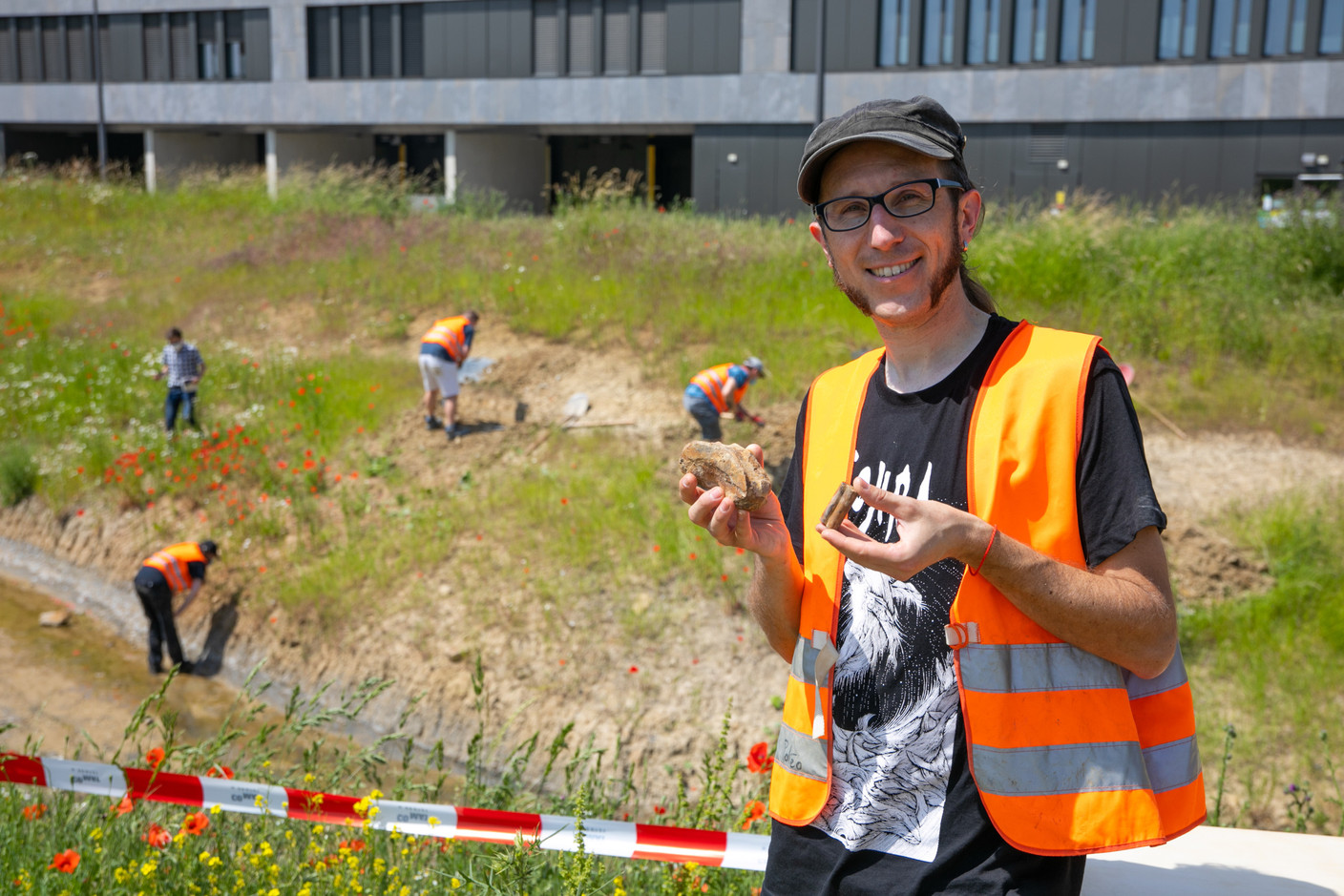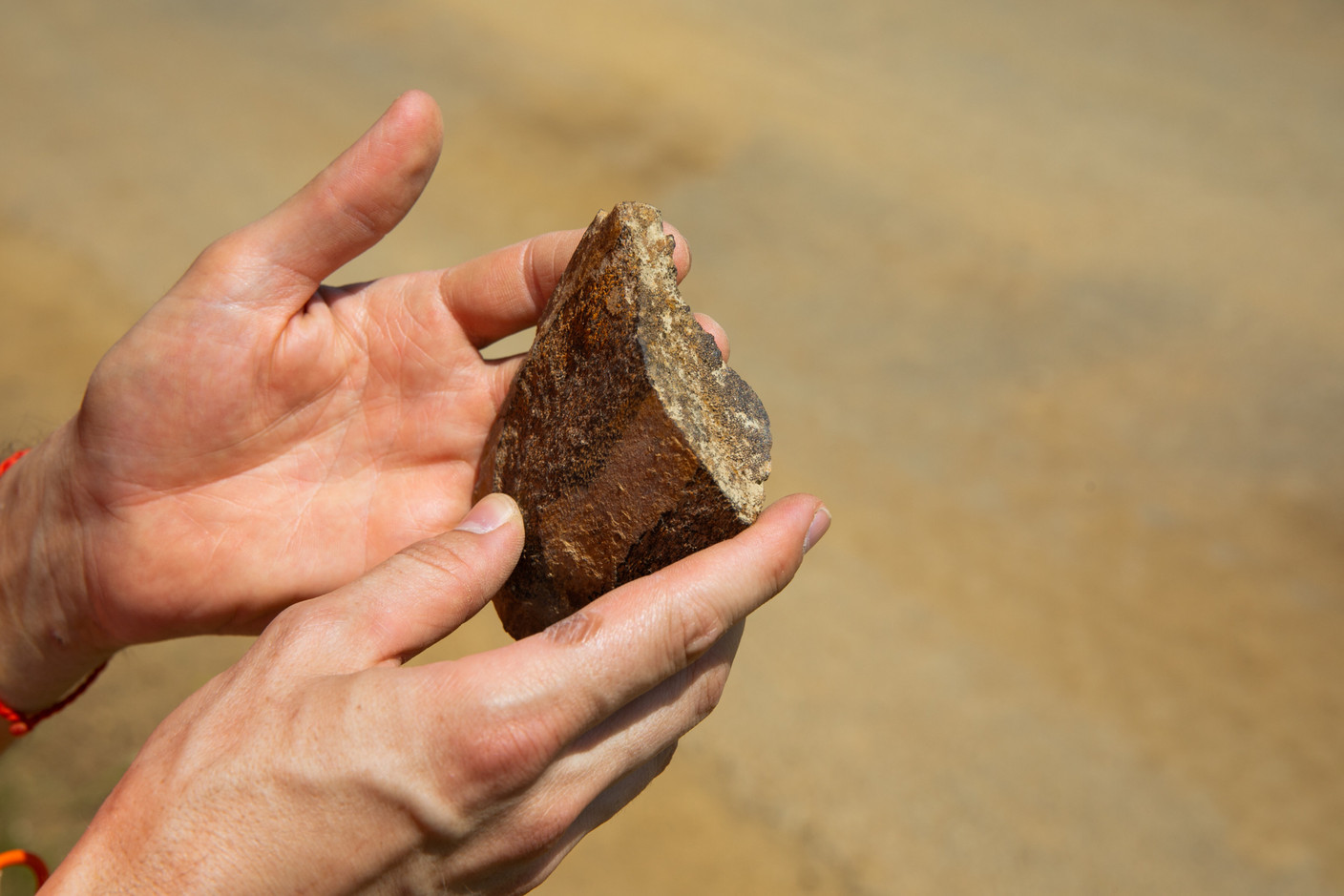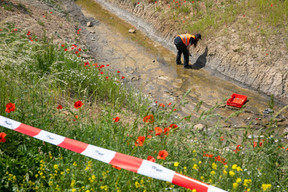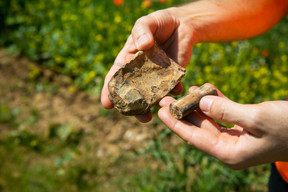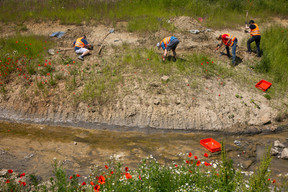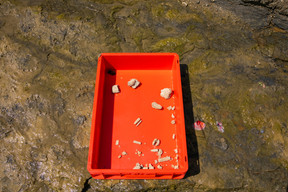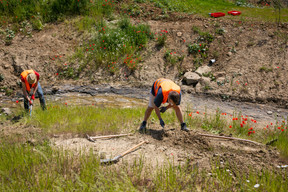The discovery will undoubtedly go down in the annals of archaeology and palaeontology in Luxembourg. Surveys carried out on Wednesday 16 June at the Cloche d'Or, right next to the water tower on the motorway, uncovered numerous fossilised bones of an ichthyosaur.
This marine reptile (lizardfish in Greek) lived in the oceans between 250 and 100 million years ago. Feeding on fish and their eggs, it was a powerful swimmer, capable of reaching 40km/h. Its size could vary according to the subspecies, ranging from one metre for the smallest to 12 metres for the largest.
And the one whose remains were discovered at the Cloche d'Or is precisely one of the most impressive, being a 190 million year old temnodontosaurus. This makes the discovery an exceptional event, since only one other specimen of the same kind has been found in the world, in the 1940s in Germany!
The unearthed bones will now be examined before being displayed to the public.
This is all thanks to a young employee of the museum which likes to prospect for fossils. Some time ago, a staff member was unexpectedly drawn to what could be a piece of bone, which was indeed an ichthyosaur vertebra.
After 190 million years, it was able to emerge from the ground.
